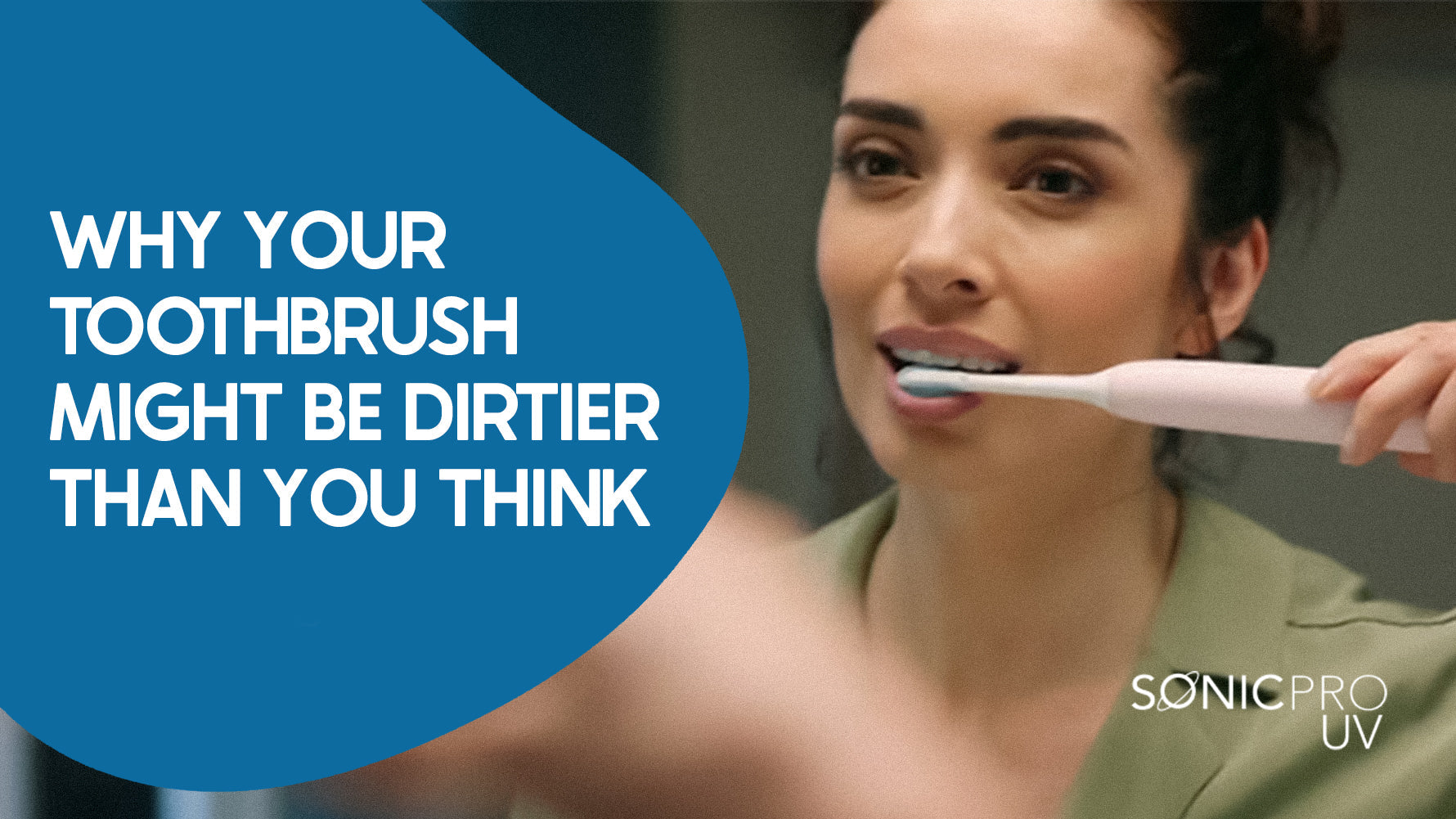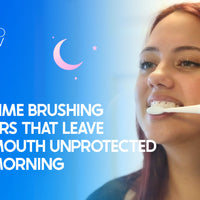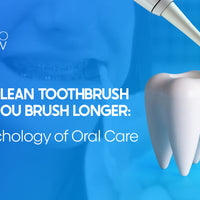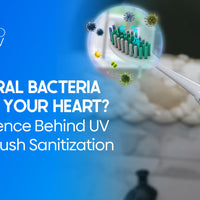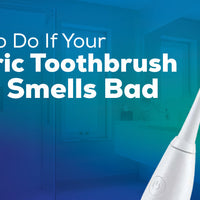Key Takeaways
-
Your toothbrush can collect bacteria from the bathroom environment, especially from toilet flushes and humidity.
-
Moisture trapped in the bristles creates an ideal breeding ground for bacteria.
-
Improper storage, such as keeping toothbrushes too close together or in closed containers, increases contamination.
-
Bacteria from a dirty toothbrush can cause bad breath, gum disease, and other health issues.
-
The SonicPro UV helps keep your toothbrush cleaner by using UV light to kill bacteria effectively.
-
Storing your toothbrush upright, rinsing it thoroughly, and replacing it regularly can also help maintain better hygiene.
Did you know that your toothbrush could be harboring more bacteria than you realize? It might seem clean after you rinse it, but the truth is, your toothbrush can become a breeding ground for germs. The warm, moist environment of your bathroom, combined with improper storage and leftover food particles, creates the perfect setting for bacteria to thrive. Understanding why your toothbrush gets dirty and how to keep it clean is essential for protecting your oral health.
Why Your Toothbrush Is Dirtier Than You Think
1. Bathroom Environment
The bathroom is not the most hygienic place to store your toothbrush. Every time you flush the toilet, microscopic particles can become airborne and settle on nearby surfaces — including your toothbrush. The humidity from showers and baths also creates a moist environment that encourages bacterial growth. If your toothbrush is stored close to the toilet or sink, it’s even more likely to pick up these airborne germs.
2. Moisture Retention
Toothbrush bristles are designed to hold water, which helps with brushing but also creates a problem when it comes to cleanliness. After you rinse your toothbrush, water can get trapped between the bristles, creating a damp environment where bacteria and mold can multiply. If your toothbrush doesn’t have time to dry between uses, the moisture allows harmful microbes to thrive.
3. Improper Storage Practices
Where and how you store your toothbrush matters more than you might think. Storing your toothbrush in a closed container might seem like a good idea, but it can actually trap moisture and promote bacterial growth. Similarly, keeping multiple toothbrushes close together can lead to cross-contamination as bacteria from one toothbrush can easily transfer to another.
4. Residual Saliva and Food Particles
Even after you rinse your toothbrush, traces of saliva and food particles can remain on the bristles. These leftovers become a food source for bacteria, allowing them to multiply rapidly. The longer your toothbrush stays wet and dirty, the more bacteria it can collect — which means you could be putting harmful microbes back into your mouth every time you brush.
The Risks of Using a Dirty Toothbrush
Oral Health Issues
Using a contaminated toothbrush can reintroduce harmful bacteria into your mouth, increasing the risk of bad breath, gum disease, and even cavities. Bacteria from a dirty toothbrush can irritate your gums and lead to infections, making it harder to maintain good oral health.
General Health Concerns
It’s not just your mouth that’s at risk — harmful bacteria from your toothbrush can enter your bloodstream through small cuts or sores in your mouth. This can potentially lead to more serious health issues, especially for people with weakened immune systems. Regularly cleaning your toothbrush is a simple way to protect your overall health.
How to Keep Your Toothbrush Cleaner
1. Store Upright and Away from the Toilet
Store your toothbrush in an upright position in a dry, open area. Keeping it away from the toilet reduces the chances of airborne contamination. If possible, store it in a cabinet or a drawer to protect it from particles in the air.
2. Rinse Thoroughly After Each Use
After brushing, rinse your toothbrush under running water to remove any leftover toothpaste, saliva, and food particles. This helps prevent bacteria from lingering on the bristles.
3. Replace Your Toothbrush Regularly
Dentists recommend replacing your toothbrush every three months or sooner if the bristles become frayed. An old, worn-out toothbrush is less effective at cleaning and more likely to harbor bacteria.
4. Consider a Toothbrush Sanitizer
A toothbrush sanitizer, like the SonicPro UV, can eliminate up to 99.9% of bacteria from your toothbrush. Using UV light technology, the SonicPro UV kills germs and ensures your toothbrush is clean and ready for use every time. This added step can give you peace of mind, knowing your toothbrush is as clean as possible.
Additional Tips for Toothbrush Hygiene
Avoid Sharing Toothbrushes
Sharing a toothbrush might seem harmless, but it’s a quick way to transfer bacteria and viruses. Even within families, it’s best for everyone to have their own toothbrush.
Let It Air Dry
After rinsing, let your toothbrush air dry completely before using it again. Bacteria thrive in moist environments, so allowing your toothbrush to dry helps prevent microbial growth.
Use a Toothbrush Cover for Travel Only
Toothbrush covers are helpful when you’re traveling, but at home, they can trap moisture and create a breeding ground for bacteria. Use a cover only when you need to protect your toothbrush while on the go.
Conclusion
It’s easy to overlook how clean your toothbrush really is, but it’s worth paying attention to. After all, it’s something you put in your mouth every day. Taking a few simple steps can go a long way in protecting not just your oral health but your overall well-being too. A little extra care now can save you from bigger issues down the road. And if you want to make things even easier, the SonicPro UV can help by killing bacteria and keeping your toothbrush cleaner with minimal effort.
FAQs
How often should I replace my toothbrush?
You should replace your toothbrush every three months or when the bristles become frayed.
Can I clean my toothbrush with mouthwash?
Yes, soaking your toothbrush in antibacterial mouthwash can help reduce bacteria, but rinsing it thoroughly under water is usually enough.
Are toothbrush sanitizers worth it?
Absolutely! A toothbrush sanitizer, like the SonicPro UV, kills up to 99.9% of bacteria, giving you a cleaner and healthier brush every time.
What’s the best way to store my toothbrush?
Store your toothbrush upright in an open area, away from the toilet and other toothbrushes, to minimize contamination.

